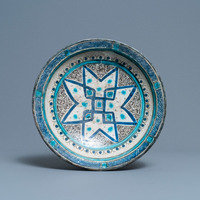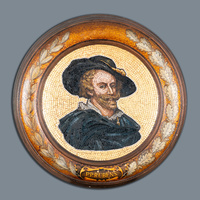We have to double-check your registration and make sure this is not an automated entry in our system. Please complete the test below...
A Hispano-Moresque luster-glazed albarello, Manises, Spain, 3rd quarter 15th C.
H.: 29,5 cm
Condition: (UV-checked)
- With a number of reglued breaks throughout, with related minor touch-ups throughout.
- A number of superficial chips and spots of superficial glaze loss throughout.
- The glaze and its lustrous effect well preserved.
Provenance:
- Property of The Mary Duke Biddle Trent Semans Foundation; On loan to the Duke University Museum of Art, 1956-2020. Mary Duke Biddle Trent Semans (1920-2012) was an American philanthropist, local and state-wide leader, and patron of the arts. A member of the Duke University Board of Trustees and the first female chairman of The Duke Endowment, she helped guide these institutions during five decades of service. In the 1960s she helped found the North Carolina School of the Arts, the USA’s first public conservatory, and in her mother's memory, created The Mary Duke Biddle Gallery for the Blind at the North Carolina Museum of Art.
Ref.:
- The Hispanic Society, Accession Number: E598, for an interesting related armorial example. (link)
- The British Museum, London, Reg no. G.563, for a related example. (link)
- In Sam Fogg's exhibition catalogue 'Lustreware from Spain', a related example is shown (nr. 7). Here, it is noted that 'a group of albarelli whose style (like that of the charger in the preceding entry) is typical of ceramics from the Valencian town of Manises. From the late fourteenth century Manises became famous for its production of cobalt-blue and lustreware and, along with Paterna, it developed into one of the most important Valencian centres for the production of Hispano-Moresque pottery. The special attraction of Manises pottery was its workshops’ mastery over the challenging lustred glaze. The Manises lustre had an orange-gold hue, produced with a silver pigment and about a tenth part of copper, which demanded a specialised firing process at much lower temperatures than other glazes. The combination of pointed leaf, looped tendril, fern ornament and Bryony flower that decorate our vessel emerged from the earlier fioralixi designs thought to have entered Valencian potters’ repertoires by around 1430, and help date its production to the middle years of the century. Variations of this delicate form of decoration, at once refined and energetic, soon found currency among Europe’s wealthy patrons, and the rarefied, luxury status of such ceramics is evinced by their incorporation into contemporary panel paintings including most famously of all Hugo van der Goes’ Portinari Altarpiece of around 1475, today in the Galleria degli Uffizi (link to catalogue)
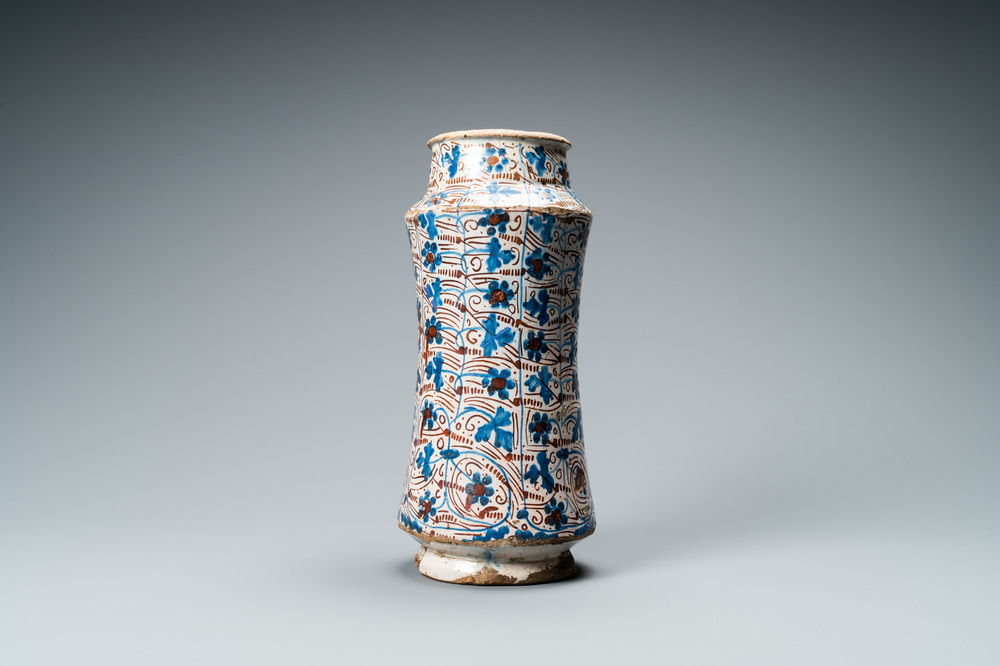
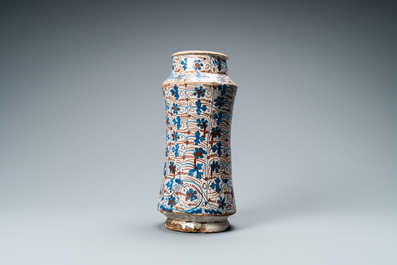
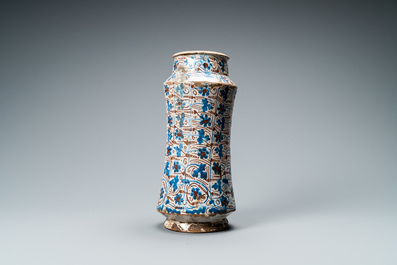
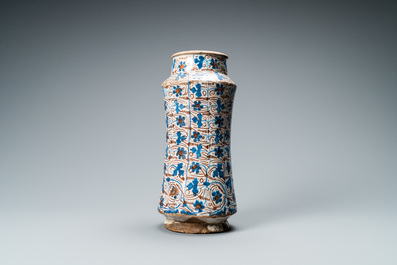
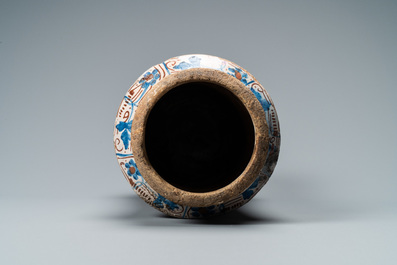
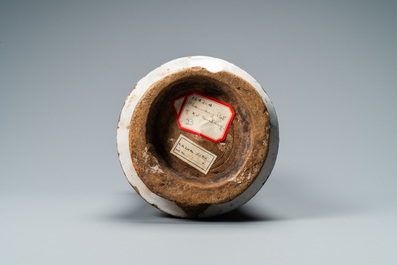
.jpeg)
.jpeg)
.jpeg)
.jpeg)
.jpeg)
.jpeg)
.jpeg)
.jpeg)
.jpeg)
.jpeg)
.jpeg)
.jpeg)
.jpeg)
.jpeg)
.jpeg)
.jpeg)
.jpeg)
.jpeg)
.jpeg)
.jpeg)
.jpeg)
.jpeg)
.jpeg)
.jpeg)
.jpeg)
